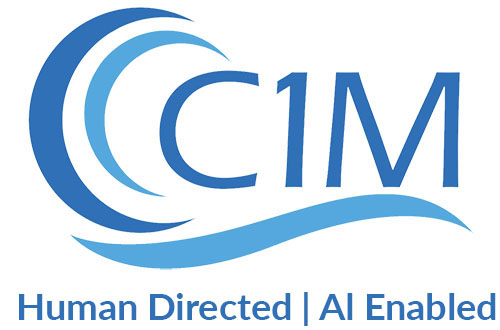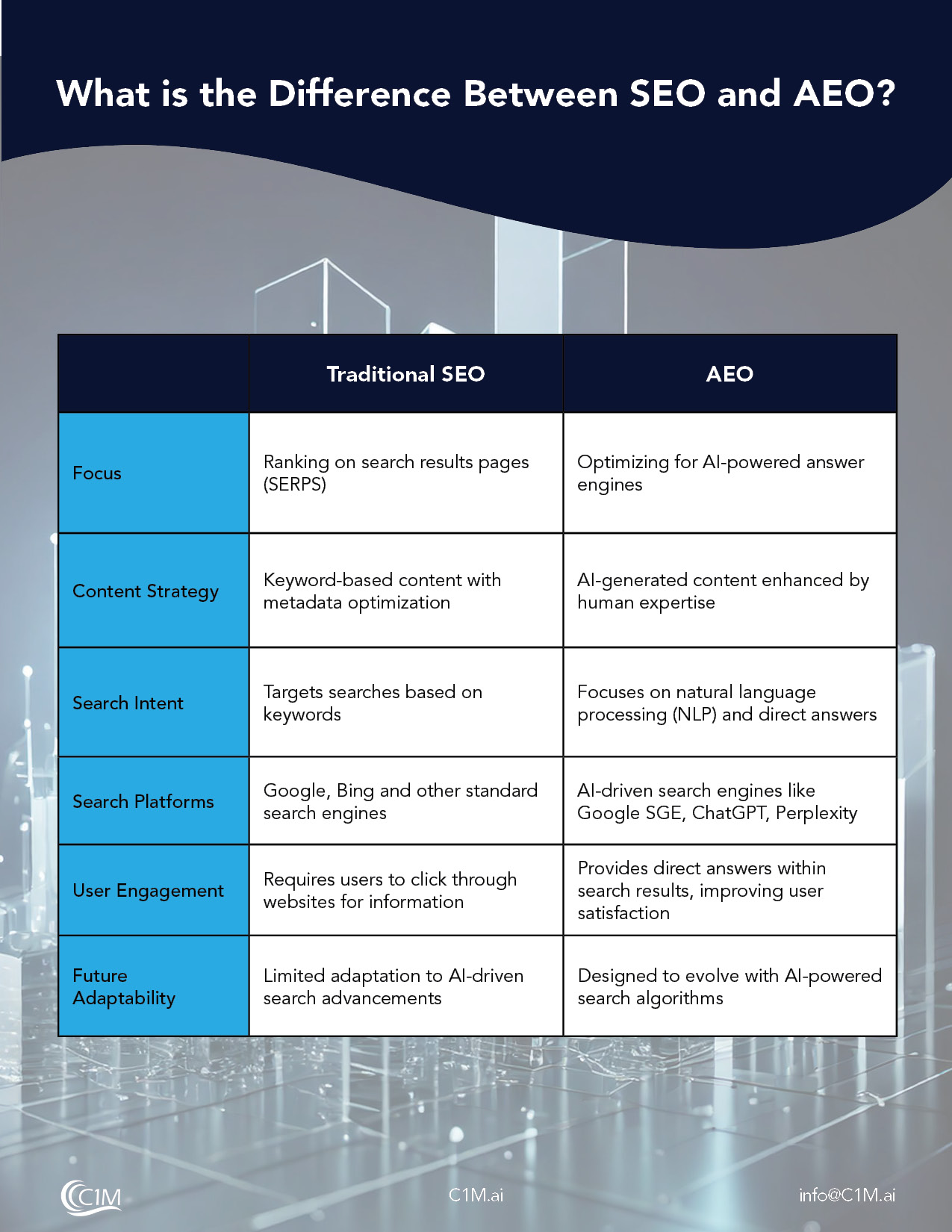
When it comes to ensuring that your website stands out on a crowded internet, SEO copywriting is key. In our modern era, smart marketers use SEO copywriting to generate more traffic and increase a site’s organic ranking on search engines like Google and Bing entice users to take action that results in more business.
SEO copywriters are in high demand, as creating high quality content is the core of getting your target audience to notice your business. But SEO copywriting success is not a straightforward formula. There are an ever-evolving range of factors that determine where your web pages wind up in an internet search.
The Google Search Console has a range of information for website owners who want to measure and improve their site’s organic traffic and performance. However, it helps to have an understanding of the fundamentals that drive exceptional SEO copywriting.
So, before creating content for your various product pages, landing pages, and category pages, read on to uncover the SEO copywriting tips that will propel your business to the top of any search engine results page.
Table of Contents
What are the Benefits of SEO Copywriting?
The Key Elements of SEO Copywriting
Examine Your Competitors
SEO Optimization Behind the Scenes
SEO Copywriting Tips
What is the Difference Between SEO Copywriting and Traditional Copywriting?
Copywriting generally refers to writing content for marketing, advertising, and promotional purposes. Therefore, there is a key difference between traditional copywriting and SEO copywriting.
Traditional copywriting focuses on creating catchy taglines, slogans, and text that will linger in a person’s memory. On the other hand, an SEO copywriter will focus on creating high-quality content that includes target keywords to catch a search engine’s attention. For example, while a traditional print advertiser doesn’t have to worry about keyword density, an SEO copywriter will want to ensure that specific keywords are sprinkled throughout new blog posts or web pages to align with common Google searches.
Good SEO copywriting is a balance between keyword density and exceptional writing. It engages readers with its informative, high-quality content. However, it also includes enough related keywords to impact its placement in search engine results.
In other words, SEO copywriting is more difficult than traditional copywriting, as it requires an SEO copywriting strategy that considers multiple factors. From the initial keyword research process to meta descriptions and title tags, SEO content writing is all about keeping a constant eye on search results.
What are the Benefits of SEO Copywriting?
There is a range of benefits to ensuring that SEO copywriting remains a building block of your marketing strategy. Here are a few ways that great SEO content can boost your business.
Increase Organic Traffic and Visibility
First and foremost, a smart SEO strategy will increase the organic traffic to your business’ website, saving costs on online, print, and other forms of advertising.
Improved Search Engine Rankings
Search engines look at all aspects of a website to determine its placement on the search results page, and being at the top of the search results is imperative to stay competitive. With solid SEO content, a business can catch the attention of a search engine, effectively increasing its visibility and brand recognition in a world of internet users.
Enhanced User Experience and Engagement
According to a recent study conducted by the McCarthy Group, 84% of millennials said that they did not like traditional marketing and didn’t trust advertisements. SEO copy is a great way to increase your business’s online presence and prestige, enhancing your users’ experience.
Higher Conversion Rates and Sales
Almost half of all product sales begin with a Google search, and this number is growing every day. Think about the last time you looked for a business, service, or particular product. Chances are that you initially used a search engine to find options in your area, leading to an eventual transaction.
The Key Elements of SEO Copywriting
Strong SEO copywriting is a multi-step process that includes every web page on your site. So, before you can get started on content creation, the first thing an SEO copywriter needs to do is identify the keywords that will grab the attention of a search engine.
Keyword Research
When it comes to content writing, many businesses do not conduct thorough keyword research before publishing blog posts or landing pages. Therefore, SEO writing can’t possibly be effective without understanding the relevant keywords that will increase organic traffic to a website.
Some search terms that internet users search to find your website may be obvious, like your business name (which should always be a main keyword) or your specific service, such as “Financial advisors in Dallas.” However, identifying other primary keywords may be trickier and will require some work behind the scenes.
Note that you can use a simple keyword tool or enlist the expertise of an SEO copywriting specialist to identify the target keywords for your content writing.
In the meantime, however, keep these SEO copywriting tips in mind when conducting keyword research to determine how internet users around the globe find your business.
Check Keyword Search Volume
When deciding the keywords to use in your SEO content, check the search volume of any primary keyword or target keyword that you intend to use. A particular keyword (and especially a generic keyword like “accountants”), may be very popular, meaning that your competition to land at the top of a search engine results page is high.
Examine Your Competitors
Your competitors are a great asset when it comes to determining the keywords that you should use to write content. Take a look at the web pages of your direct and larger global competitors to see what common words are sprinkled throughout their sites. It’s especially helpful to pay close attention to the meta descriptions, title tags or meta tags, and headers on the first page of their websites to identify what keywords and phrases they are using SEO to drive traffic to their site.
Need assistance? C1M can offer a free competitor analysis to determine exactly how you stack up against your competition, and how to enlist the SEO best practices that will propel your business over the top.
Include Simple Keywords and Long Tail Keywords
Long tail keywords are phrases generally made from three to five words. You’ll want to include quick keywords that align with your business, as well as long tail keywords that detail the specifics.
Look Beyond the Exact Keyword Phrase
Yes, you will want to use an exact keyword phrase with the fundamentals of your business and services (especially when it comes to long tail keywords). Then again, you’ll also want to consider a user’s search intent.
The search intent is the purpose of conducting a search. Internet users might not always use your primary keyword to find sites and businesses like yours. Consider the variations when it comes to search intent and, subsequently, keyword intent. For example, the search query may be different in a voice search. In writing, a person may type “Barbecue restaurants near Dallas, Texas.” But via a voice search (which now accounts for roughly 25% of all Google searches), users may phrase their search intent as “What cheap barbecue restaurants are nearby?”
Misspellings are another opportunity to hone your keywords, as generally speaking, most internet users don’t pay close attention to spelling and grammar when typing their queries into search engines.
Think Broadly
Simply put, think miles outside the box when it comes to your search terms, including your focus keyword, primary keyword, and all the supplemental keywords and phrases that will garner a search engine’s attention. Exceptional keyword research goes hand-in-hand with your placement in organic search results, so choosing the best keywords is a high priority in your SEO copywriting efforts.
If you are having keyword difficulty or need assistance determining the best keywords for your SEO copywriting, contact the experts at C1M. We can help you create a complete SEO copywriting strategy that can be integrated into every aspect of your site, from an individual web page to blog posts.
SEO Optimization Behind the Scenes
Once you have identified the relevant keywords that will connect your website with search engines, it’s time to take stock of the individual web pages, landing pages, blog posts, and other aspects of your site.
Every web page and blog post on your website should have your relevant keywords ingrained in the behind-the-scenes elements of your content.
Specifically, this refers to the following features:
Meta Description
- A meta description tag generally informs and interests users with a short, relevant summary of what a particular page is about. Google prefers that a meta description is between 120-158 characters, but this may change in the future. Ensure that your primary keywords are included in your meta descriptions, but do not use the same meta description for every page. For example, you may want your business name included in the meta description for your home page (or first page). However, you still will want a different and relevant meta description for your category pages.
Title Tag
- The title tag, or meta tag, is commonly the headline on search engine results pages. A solid title tag should be about 50-70 characters long and should sum up what the web page or blog post is all about. Title tags are imperative because they let a user see what a specific landing page or blog post is about, and every page on your site should have a relevant title tag to allow Google and other search engines to easily identify the content within your site.
Image, Media, and Other Tags
- It’s also imperative to include tags or descriptions for the various media throughout your website, such as images and videos. Not only does this increase the number of keywords used on your site, but it also provides valuable information for users who may not be able to load or view your media components.
Table of Contents
- A table of contents is a great way to structure all the content within a web page or blog post, and adding headings, subheadings, and minor headings can also help increase your placement in search engine rankings.
Link Building
- One of the best ways to increase your search engine rankings is to incorporate link building into your copywriter SEO efforts. Link building entails linking certain phrases or keywords to outside websites or internal pages that accentuate or supplement your content in a relevant and informative way. For internal link building, you can include links to other pages within your site that are relevant to your blog post or web page. It’s imperative to ensure that the outside sites you are linking to are considered a voice of authority for external links. This can include news articles from trusted sources, an e-commerce site like Amazon, or an informative website like Wikipedia.
A final note: There are SEO tools readily available to help with all these web page elements, but your best path forward is to enlist the expertise of a marketing agency that goes miles beyond what these out-of-the-box SEO copywriting tools have to offer. C1M is a powerful resource for businesses that want to optimize their SEO copywriting to the fullest and have the edge over competitors.
SEO Copywriting Tips
Once you have conducted your keyword research and have structured your website to be SEO optimized, it’s time to start writing. Here are just a few SEO copywriting tips to get you started.
Avoid Keyword Stuffing
- Regardless of whether you are writing a blog post or the content for your landing page, avoid adding keywords for the sake of adding keywords. Moreover, other search engines will be able to tell if your content is relevant and readable or just stuffed with as many keywords as possible.
Keep Adding Content Consistently
- The best way to stay at the top of a search results page is to stay relevant. A blog is a great way to create content, as you can add a new blog post at regular intervals. Aim to include at least 1-4 new blog posts per month, add new keywords as needed, and ensure your site stays on a search engine’s radar.
Watch Your Length
- You want to make sure that any blog post or other article on your website is at least 300 words long, preferably much longer.
Keep Your Target Audience in Mind
- Make sure that the content you create is specifically designed for your target audience. For example, a blog post geared towards corporate executives or industry professionals will be different than a blog post geared towards casual web browsers.
Add Something to the Conversation
- Most importantly, you want your SEO copywriting to be informative, engaging, and offer something useful to your readers! Engaging content with fresh and relevant topics is the backbone of SEO copywriting, and it will keep your target audience’s attention.
Start Reaching Your Marketing Goals with an SEO Copywriting Expert on Your Side
While making strategic moves to enhance your SEO copywriting, bear in mind that your competitors are too. Therefore, the best way to stay ahead is to have an SEO copywriting expert on your team.
C1M offers a complete SEO strategy, from social media marketing to the right keywords for your next blog post. Our content specialists are standing by to help you make strategic decisions that lead to actionable results.
Let’s work together to ensure that your SEO copywriting efforts are hitting the mark and take the next steps needed to propel your business to a new level of success.









